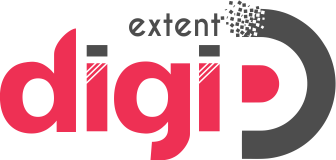Compensation models in digital marketing or remuneration include price strategies and business models for many forms of internet marketing, such as affiliate marketing, contextual advertising, search engine marketing (including vertical comparative shopping engines and local search engines), and display advertising.
What Are Compensation Models?
Pay Per Project
For projects with a distinct beginning, middle, and end, this allows an agreed-upon flat price with stated expectations and scope based on projected hours and rates.
The problem with project-based compensation is that there is little room for mistakes, so when projects alter, or estimates are inaccurate, the agency may bill the client extra. Another consideration to bear in mind is that the fixed budget may hinder the project’s growth by limiting the agency’s creative ideas, limiting its skills, or compromising quality to meet deadlines. Especially if they run over time or budget.
Performance
Performance-based pay is based only on the agency’s job output. The customer and agency define predetermined targets, and if the production surpasses expectations, the agency gets extra bonuses. If an agency generates more qualifying leads for a brand, it gets paid.
In this model, the client knows what to expect and doesn’t have to control progress. With a clear goal in mind, digital marketing agencies can better allocate resources to meet these goals.
For performance-based compensation to work, both parties must agree on specific performance indicators. With this strategy, it’s vital everyone agrees on specific measures and KPIs. Uncertain measurements or undefined goals lead to confusion and a breakdown in the relationship.
Time and Materials
An hourly rate is agreed upon in the time and materials compensation model, and the project’s estimated completion time is calculated. The price is determined using an individual rate card (each agency position has a different hourly rate) or a blended rate (an average hourly rate for all roles in aggregate).
The client then gets billed as work is completed. This paradigm is helpful for long-term projects that require flexibility to adapt to changing conditions. Resources and time can be better spent on more intensive project elements instead of waiting for fixed fees and schedules.
Retainer
The retainer model is a fixed monthly cost for a “set number of hours” of marketing services. An agency team working with the client is consistent and prioritizes their continuing needs. In this paradigm, agencies are a marketing team extension. Orders or changes can be added to the monthly retainer if the client’s needs exceed the predetermined quota.
For the creative side, retainer models are more prevalent; each employee keeps a timesheet for the account. For example, a brand might outsource its complete email marketing strategy to an agency, including list maintenance, monthly newsletters, and weekly promotions.
A retainer provides a dedicated agency team focused on meeting the client’s urgent demands. Because this is an ongoing working relationship, the agency is likely to have a more intimate knowledge of the company to create a better working relationship.
The benefits of this model for the agency is that the retainer provides stable revenue and allows for client-focused staffing. When choosing to work with a digital marketing company, you should create your terms based on the compensation models that will most likely benefit you and the agency for the necessary work.


